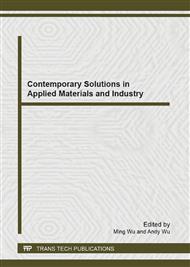p.75
p.81
p.86
p.94
p.100
p.105
p.109
p.113
p.119
Design and Controllable Synthesis of Starch-Derived Magnetic Carbon Spheres with Hierarchical Pore Structure
Abstract:
Magnetic carbon spheres (MCSs) with hierarchical pore structure were designed and controllably synthesized using corn starch as carbon source and iron nitrate as metal source by a combined procedure of enzymolysis, pre-oxidation and catalytic carbonization. The results show that after enzymolysis, the porous starch precursor inherits the morphology of original starch with round shape and has a number of honeycomb-like pores of ca.1 μm on the outside surface. It has been found that the MCSs materials with hierarchical porous structure can be synthesized only from the pre-oxidized porous starch by the catalytic carbonization technique, evidenced that the pre-oxidation of carbon source is a dominating factor governing the formation of MCs with hierarchical pore structure. Compared with the porous starch, the pores on the surface of the MCSs shrink slightly and vary in a range of 0.3-0.6 μm.
Info:
Periodical:
Pages:
100-104
Citation:
Online since:
April 2013
Authors:
Price:
Сopyright:
© 2013 Trans Tech Publications Ltd. All Rights Reserved
Share:
Citation:


